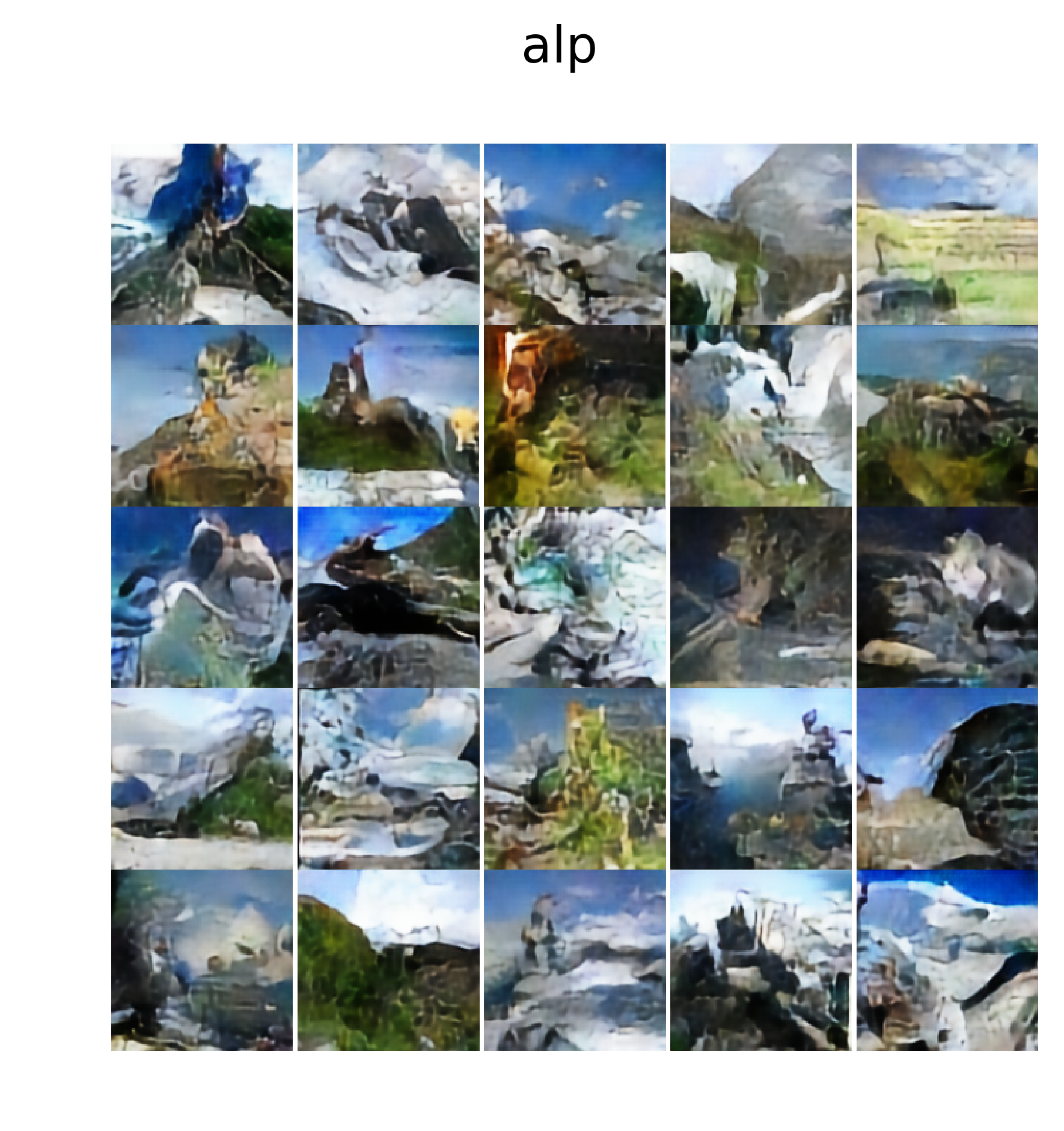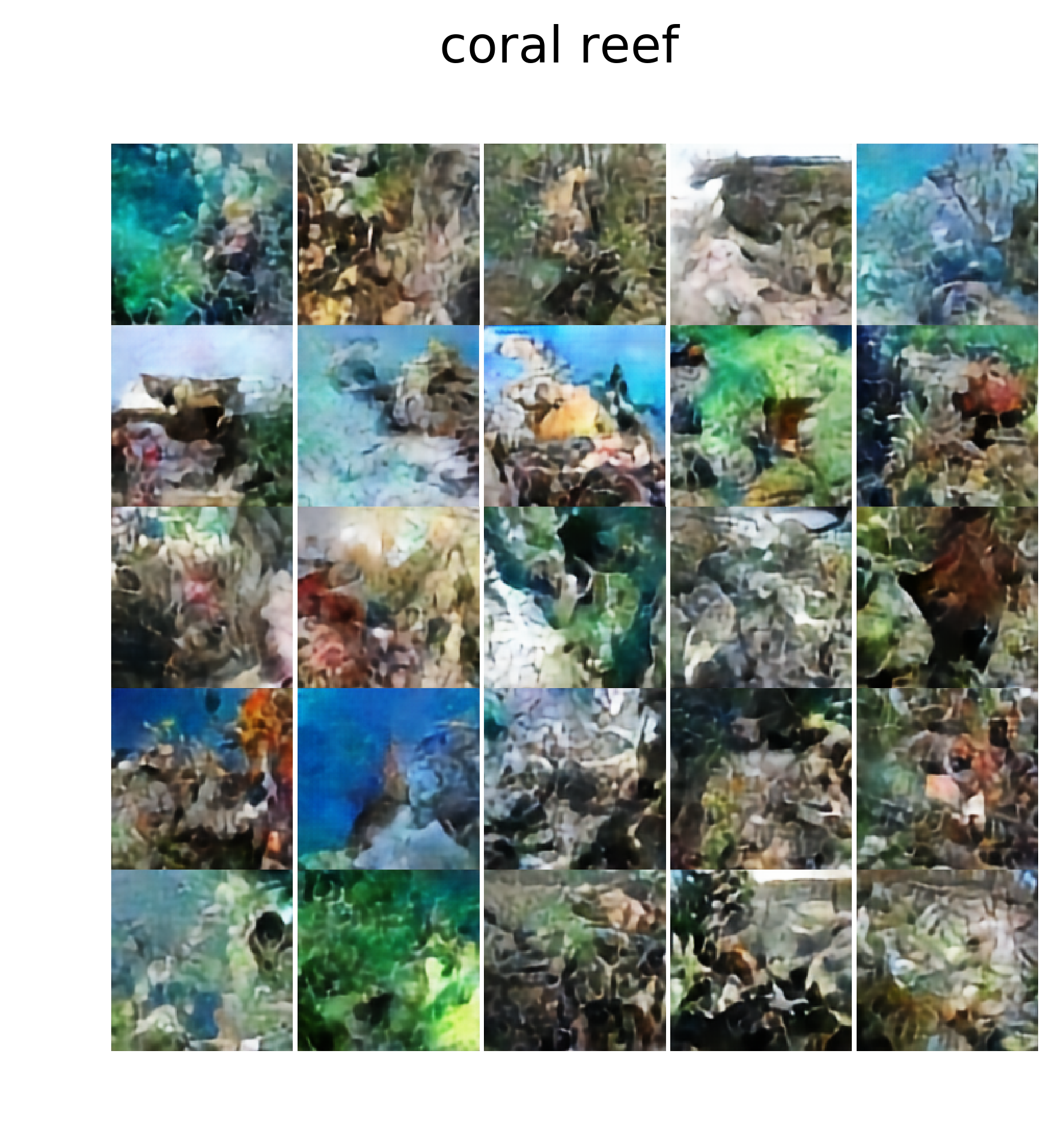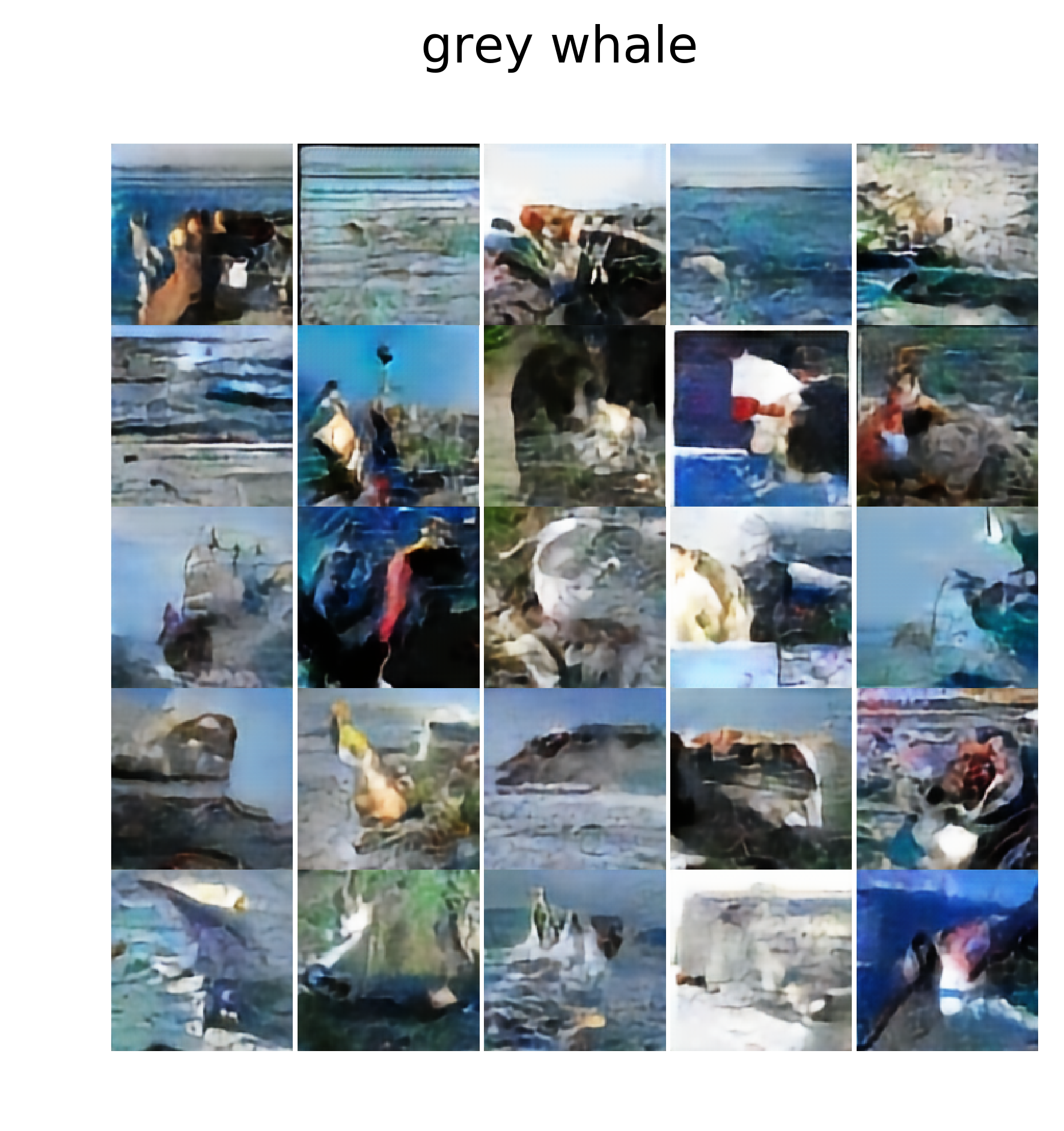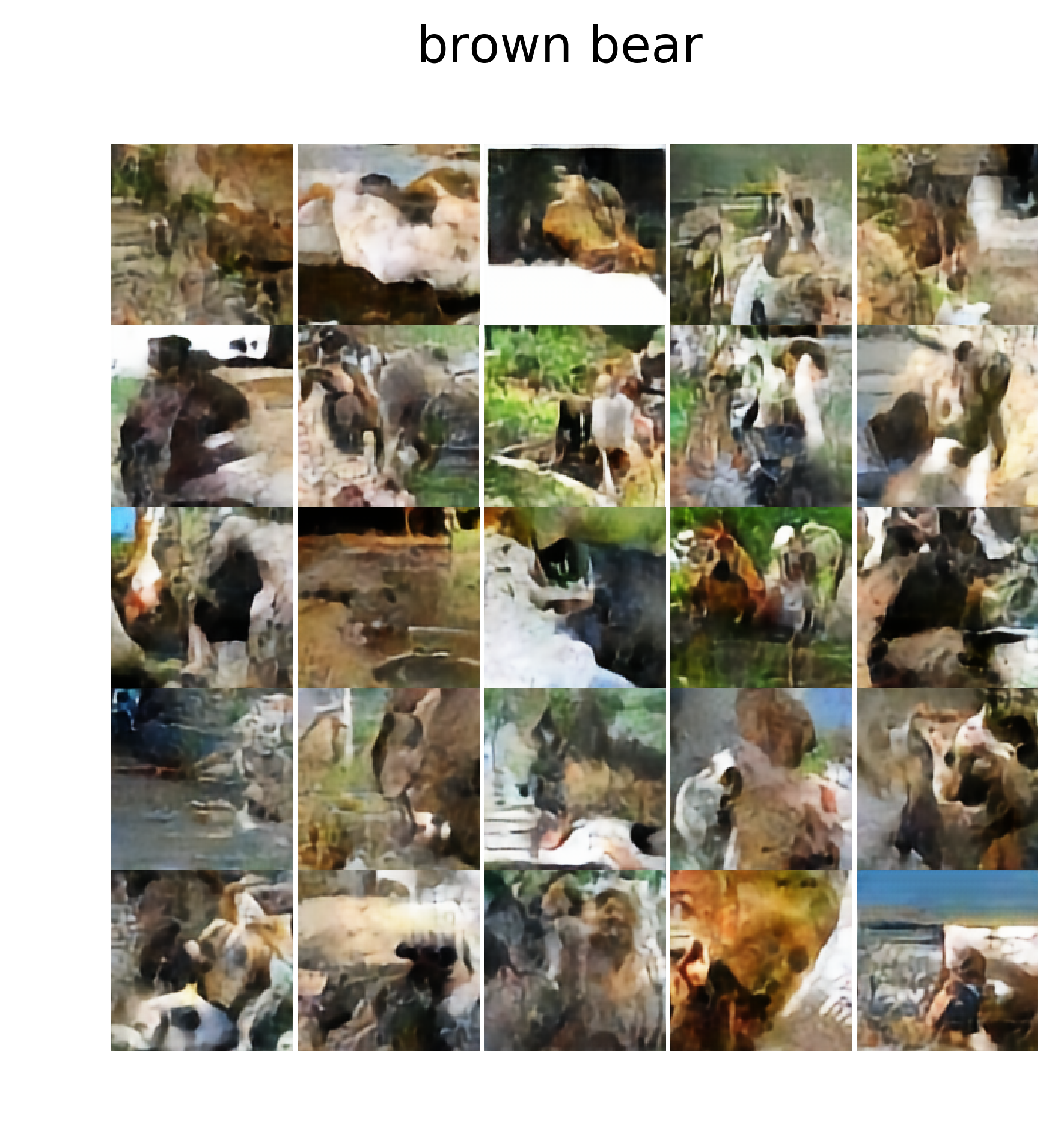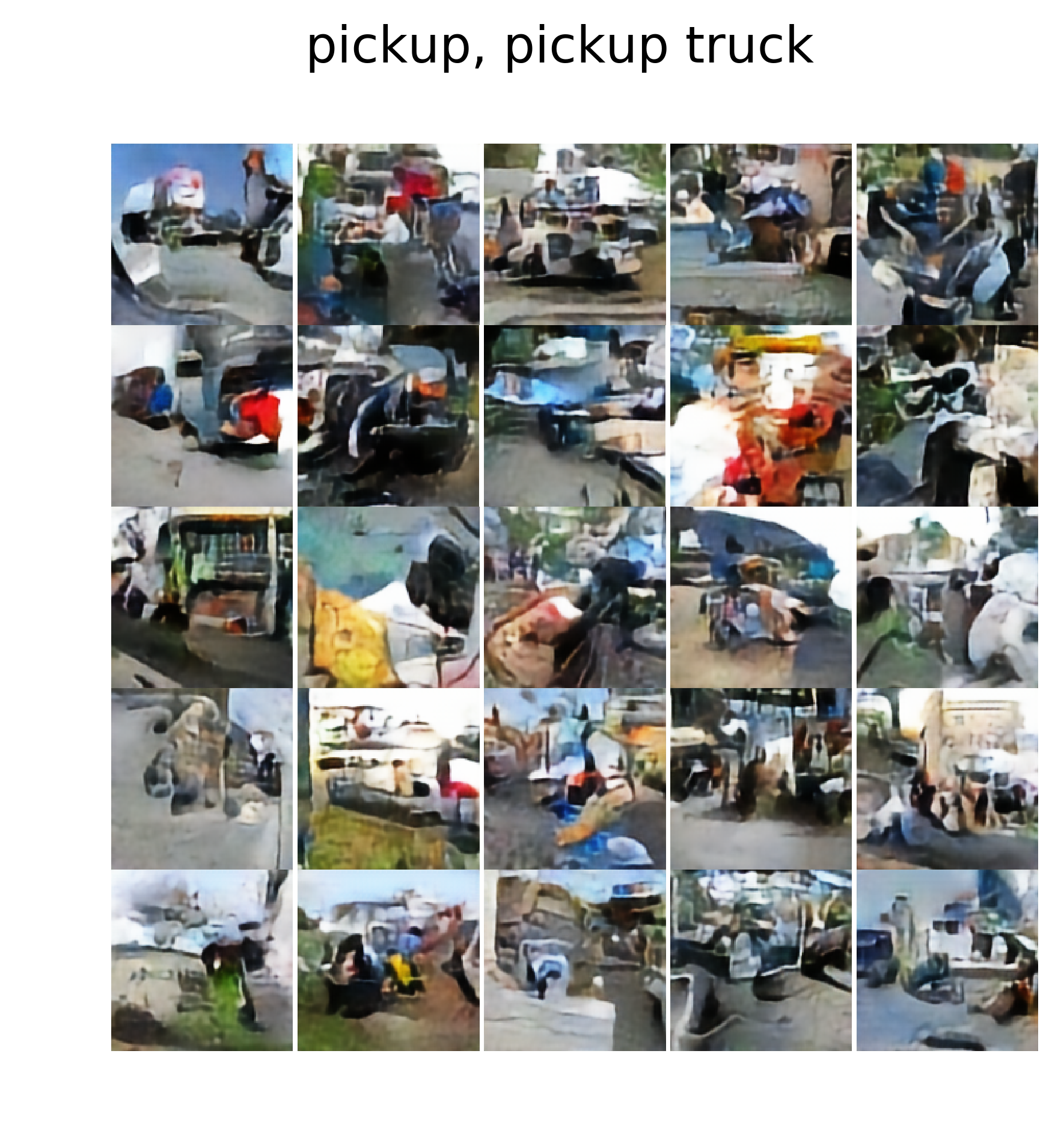This repository implements the paper, Neural Discrete Representation Learning (VQ-VAE) in Tensorflow.
- Python 3.5
- Tensorflow (v1.3 or higher)
- numpy, better_exceptions, tqdm, etc.
- ffmpeg
-
ImageNet
Validation Set Images Reconstructed Images 

-
Class Conditioned Sampled Image (Not cherry-picked, just random sample)
-
I could not reproduce as sharp images as the author produced.
-
But, some of results seems understandable.
-
Usually, natural scene images having consistent pixel orders shows better result, such as Alp or coral reef.
-
More tuning might provide better result.
-
-
Pixel CNN
-
MNIST Sampled Image (Conditioned on class labels)
-
Cifar10 Sampled Image (Conditioned on class labels)
From top row to bottom, the sampled images for classes (airplane,auto,bird,cat,deer,dog,frog,horse,ship,truck)
Not that satisfying so far; I guess hyperparameters for VQ-VAE should be tuned first to generate more sharper result.
-
All training is done with Quadro M4000 GPU. Training MNIST only takes less than 10 minutes.
-
MNIST
Original Images Reconstructed Images 

The result on MNIST test dataset. (K=20, D=64, latent space=3 by 3)
I also observed its latent space by changing single value for each latent space from one of the observed latent code. The result is shown below.

It seems that spatial location of latent code is improtant. By changing latent code on a specific location, the pixel matches with the location is disturbed.
This results shows the 1000 generated images starting from knwon latent codes and changing aa single latent code at radnom location by +1 or -1. Most of the images are redundant (unrealistic), so it indicates that there are much room for compression.
If you want to further explore the latent space, then try to play with notebook files I provided.
-
CIFAR 10
Original Images Reconstructed Images 

I was able to get 4.65 bits/dims. (K=10, D=256, latent space=8 by 8)
It will download required datasets on the directory ./datasets/{mnist,cifar10} by itself.
Hence, just run the code will do the trick.
- Run mnist:
python mnist.py - Run cifar10:
python cifar10.py
Change the hyperparameters accordingly as you want. Please check at the bottom of each script.
I provide the model and the code for generating (,or reconstructing) images in the form of Jupyter notebook. Run jupyter notebook server, then run it to see more results with provided models.
If you want to test NLL, then run test() function on cifar.py by uncomment the line. You can find it at the bottom of the file.
- WaveNet?
Contributions are welcome!
- The results seems correct, but there is a chance that the implmentation is not perfectly correct (especially, gradient copying...). If you find any glitches (or, a major defect) then, please let me know!
- I am currently not sure how exactly NLL should be computed. Anyone who wants me a proper explantion on this?
- The code for Pixel CNN is borrowed from anantzoid's repo.
